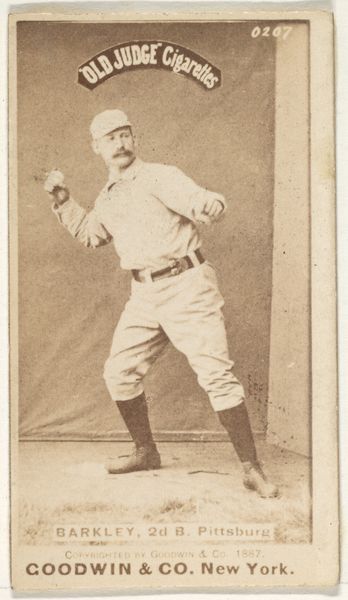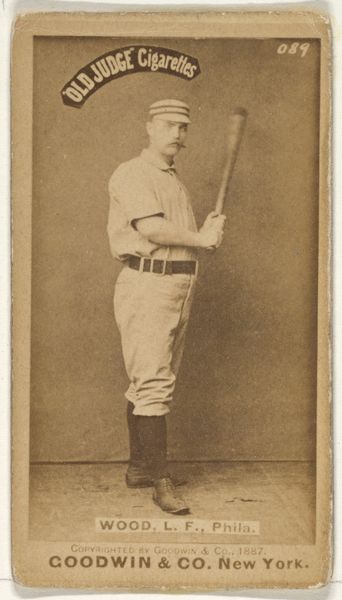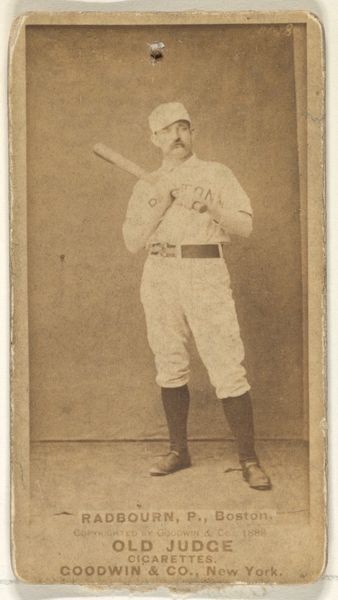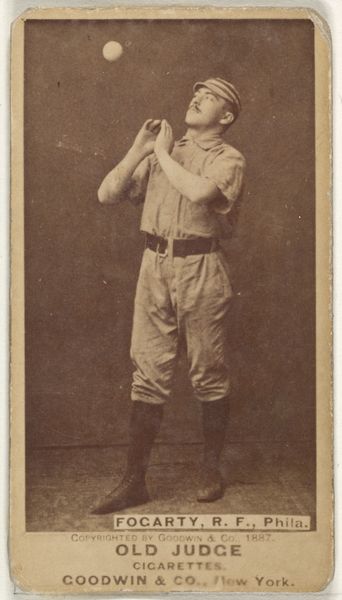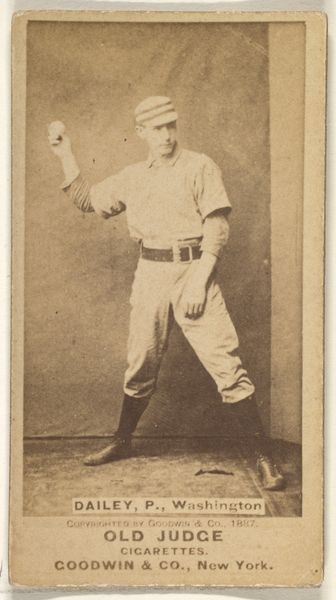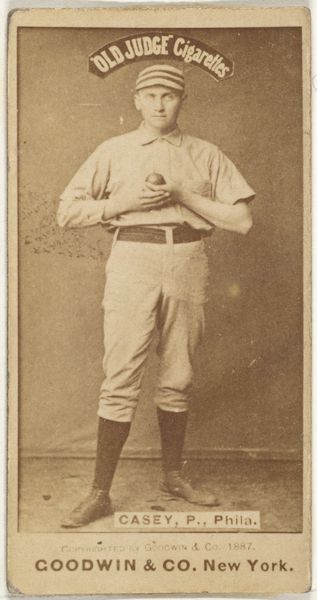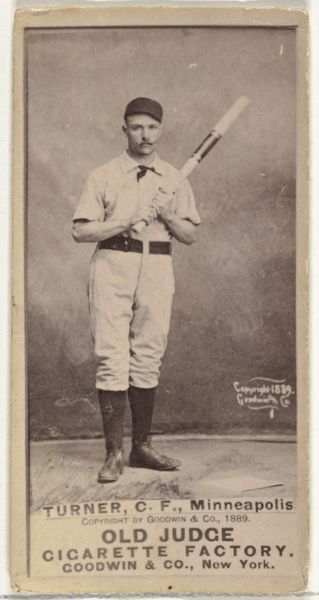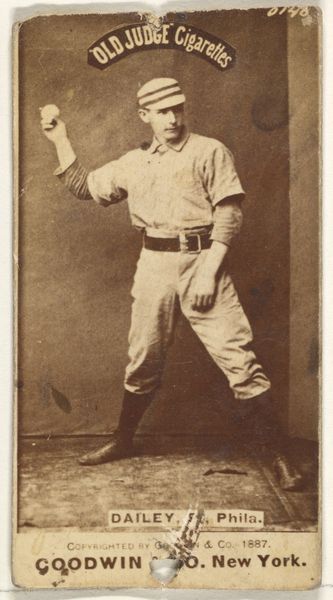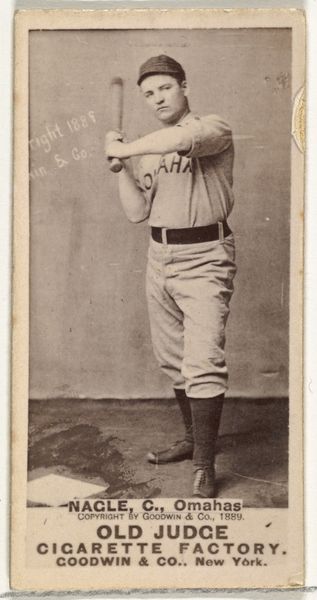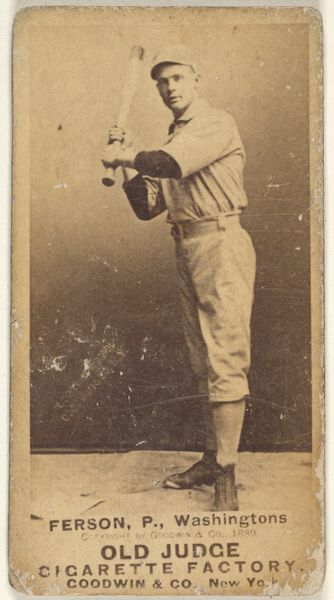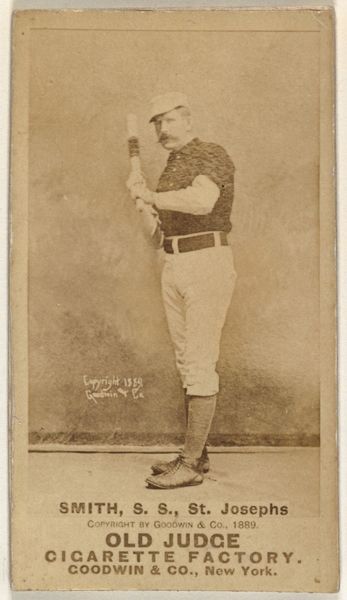
Sidney Douglas Farrar, 1st Base, Philadelphia, from the Old Judge series (N172) for Old Judge Cigarettes 1887
0:00
0:00
drawing, print, photography
#
portrait
#
drawing
# print
#
impressionism
#
baseball
#
photography
#
historical photography
#
19th century
#
men
Dimensions: sheet: 2 11/16 x 1 3/8 in. (6.9 x 3.5 cm)
Copyright: Public Domain
Curator: This is a fascinating artifact, a baseball card dating back to 1887. It's titled "Sidney Douglas Farrar, 1st Base, Philadelphia, from the Old Judge series (N172) for Old Judge Cigarettes," produced by Goodwin & Company. Editor: It has a lovely sepia tone, like a faded memory. I notice the clear, balanced composition with Farrar positioned centrally; the lighting is remarkably even. It emphasizes the geometry and materiality of the baseball card, its sharp lines and slightly rough texture. Curator: Indeed. These cards were originally included in packs of Old Judge Cigarettes as a marketing ploy. Imagine the societal context; it speaks volumes about consumption habits, the burgeoning popularity of baseball, and how commercial interests shaped even leisure activities. Editor: And think about how that placement shaped its artistic context; does its presence inside of a package recontextualize the figure of Farrar as somehow related to "Old Judge" brand of cigarette? It feels almost as though his image is meant to impart feelings related to trustworthiness or high standing! Look at the symmetry created by his poised hands below the ball! The photographer very intentionally created balanced negative spaces, as well. Curator: Absolutely, the distribution method is key. This wasn't 'art' meant for a gallery; it was a collectible, a disposable good, and an advertisement all rolled into one. It reflects the growing commercialization of sport and celebrity at the time, and the expansion of industrial image production and its reach. Editor: And the sepia tone is such a choice. It flattens the field into something simpler while giving this otherwise pedestrian portrait an historical significance. Even Farrar's body becomes material; uniform becomes a signifier of function instead of artifice; Curator: Precisely. It reveals how photography was used to build brands and consumer culture and how athletes became commodities in a rapidly industrializing society. This is an incredibly interesting object with great social value and an intriguing visuality. Editor: The way such commercial context reshapes something as universal and historical such as visual portraiture is intriguing. Thank you for pointing out the significance of how all those decisions shape how we see even form!
Comments
No comments
Be the first to comment and join the conversation on the ultimate creative platform.
